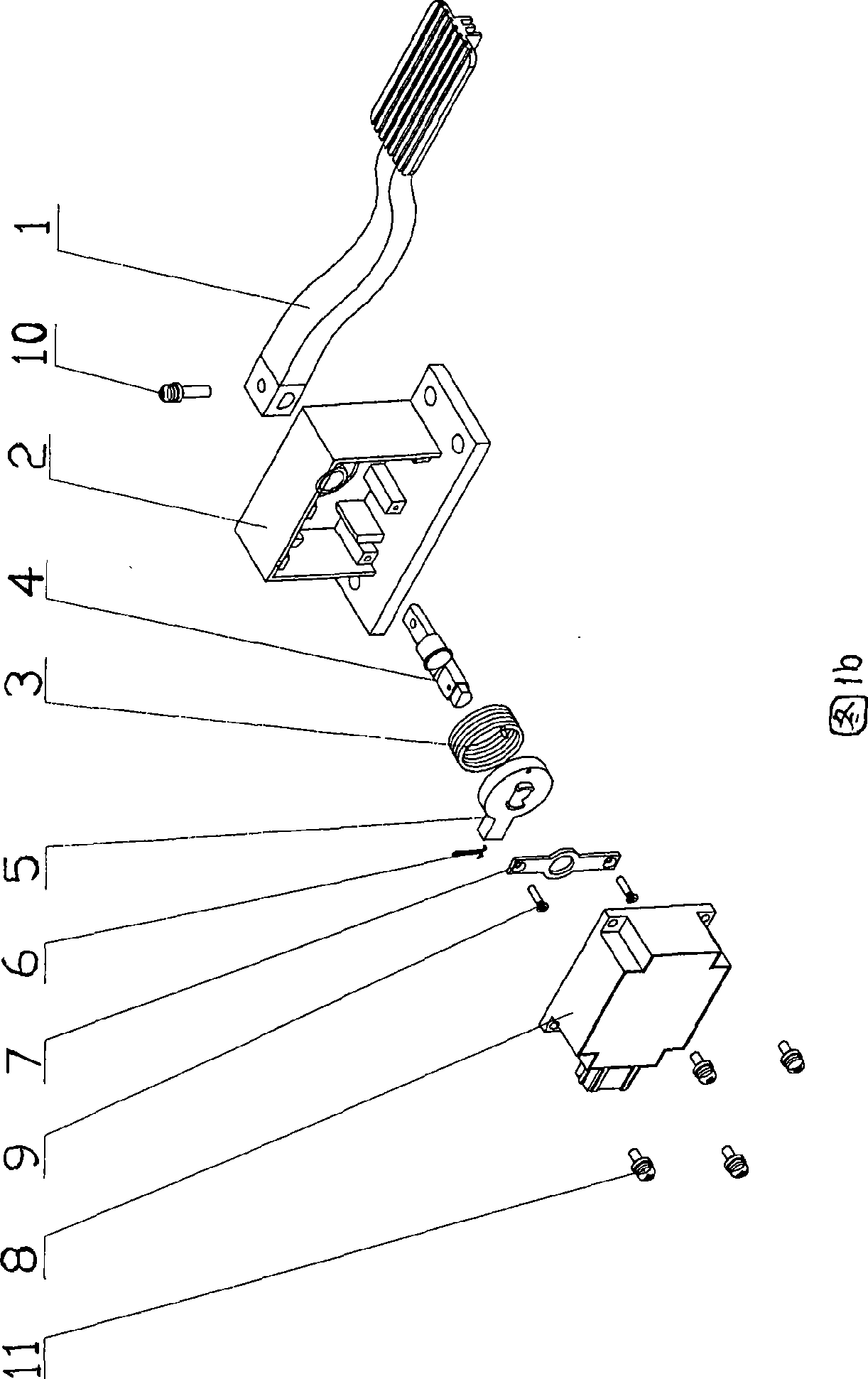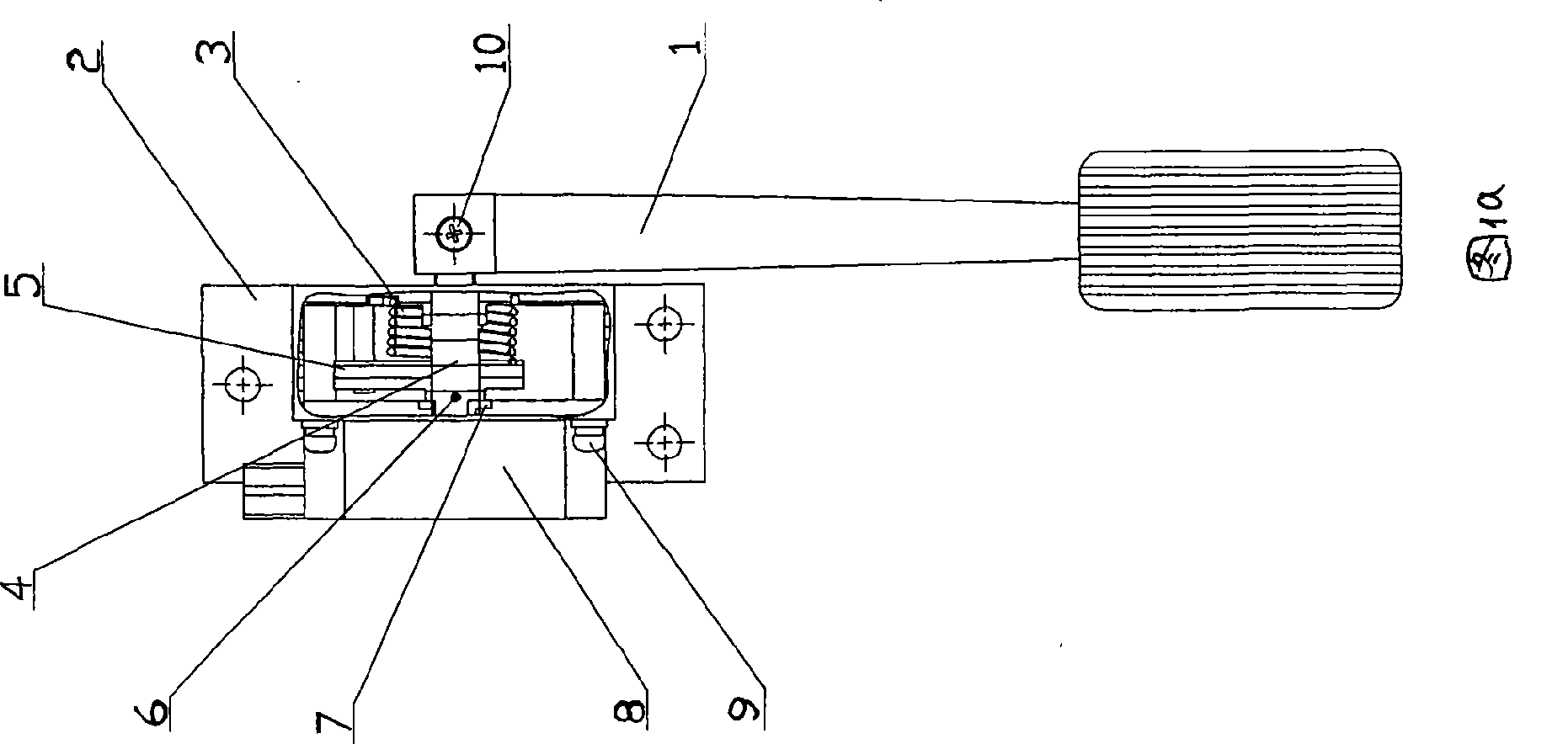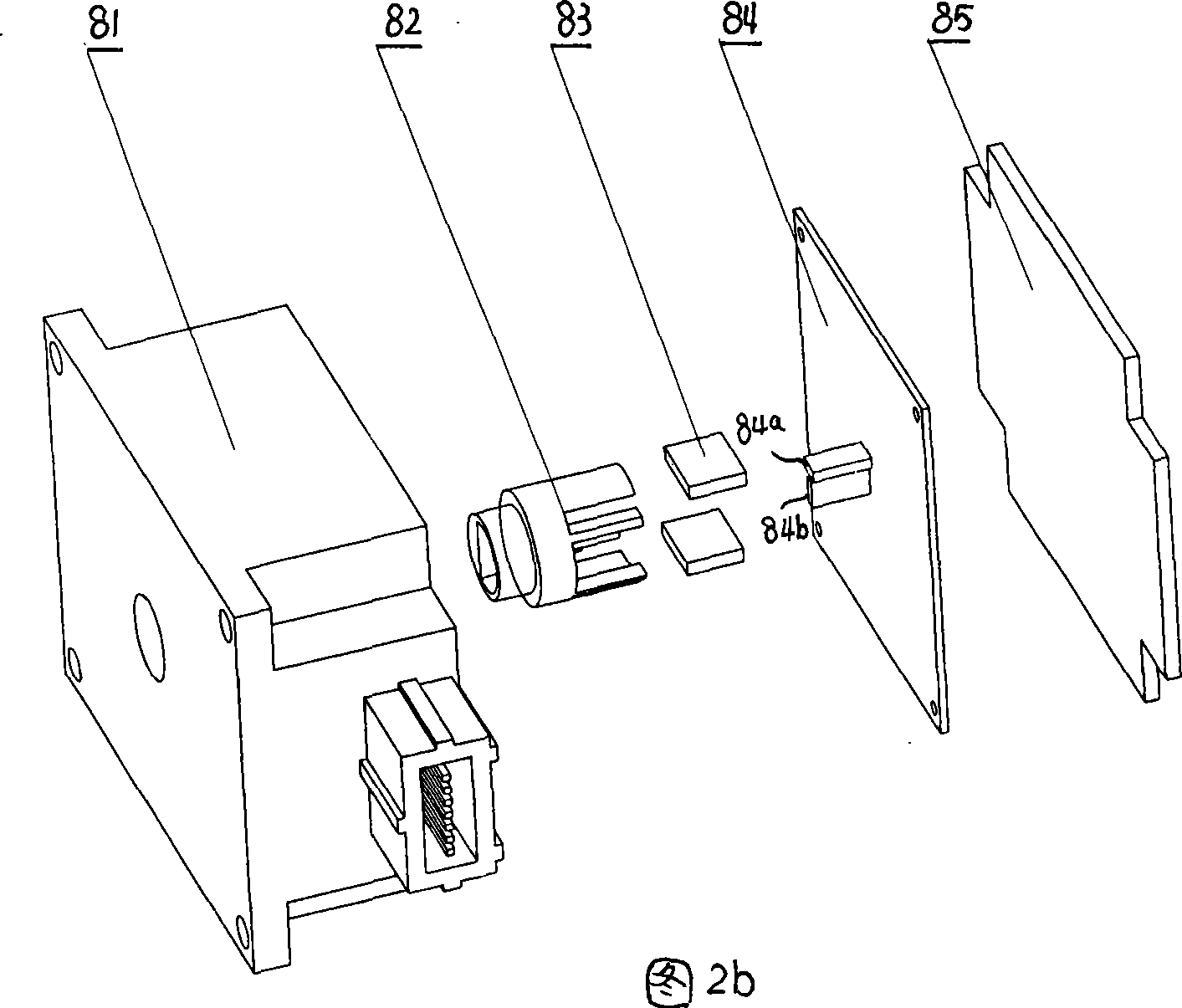Non-contacting intelligent electric throttle
An electronic throttle and non-contact technology, which is applied in the direction of instruments, computer control, simulators, etc., can solve the problems of poor environmental adaptability, wear of resistors, and low service life, and achieve multi-functional and intelligent functions , high reliability, and the effect of increasing drivability
- Summary
- Abstract
- Description
- Claims
- Application Information
AI Technical Summary
Problems solved by technology
Method used
Image
Examples
Embodiment Construction
[0016] As shown in Figures 1a and 1b, the pedal 1, return spring 3, center shaft 4, limit plate 5, spring clip 6, pressure plate 7, sensor 8, screw 9, screw 10, and screw 11 are all installed on the body 2. In Fig. 2, the structure of the sensor 8 is as follows: the sensor shaft 82 is arranged on the body 81, and two magnets 83 are fixed on the shaft, and the two-way linear Hall sensors 84a, 84b at a position of 90° are fixed on the circuit board 84 Above, the circuit board is fixed on the body 81, and the Hall sensors 84a, 84b are located within the uniform magnetic field generated by the two magnets 83, the strength of the magnetic field is less than the saturation strength of the Hall sensor; there is also a sensor shaft 82 controlled by the pedal 1 Driving mechanism: the pressure plate 7 is installed on the body 2, the central axis 4 is erected on the limit gap of the body 2 and the opening of the pressure plate 7, and the position inside the pressure plate 7 on the central...
PUM
 Login to View More
Login to View More Abstract
Description
Claims
Application Information
 Login to View More
Login to View More - R&D
- Intellectual Property
- Life Sciences
- Materials
- Tech Scout
- Unparalleled Data Quality
- Higher Quality Content
- 60% Fewer Hallucinations
Browse by: Latest US Patents, China's latest patents, Technical Efficacy Thesaurus, Application Domain, Technology Topic, Popular Technical Reports.
© 2025 PatSnap. All rights reserved.Legal|Privacy policy|Modern Slavery Act Transparency Statement|Sitemap|About US| Contact US: help@patsnap.com



